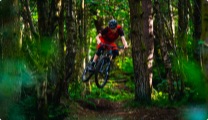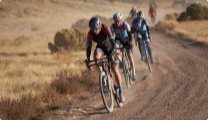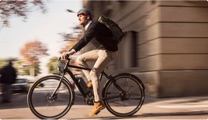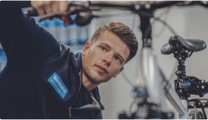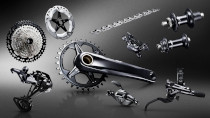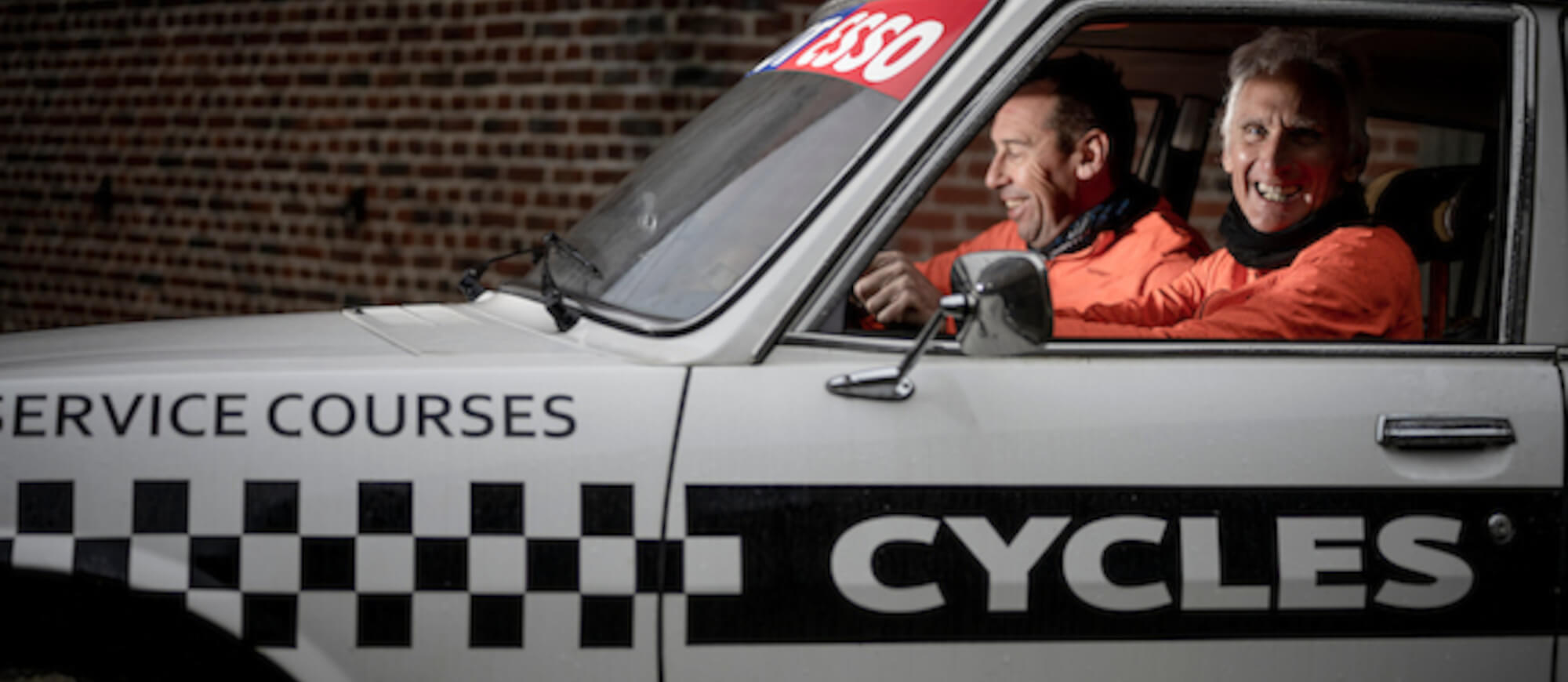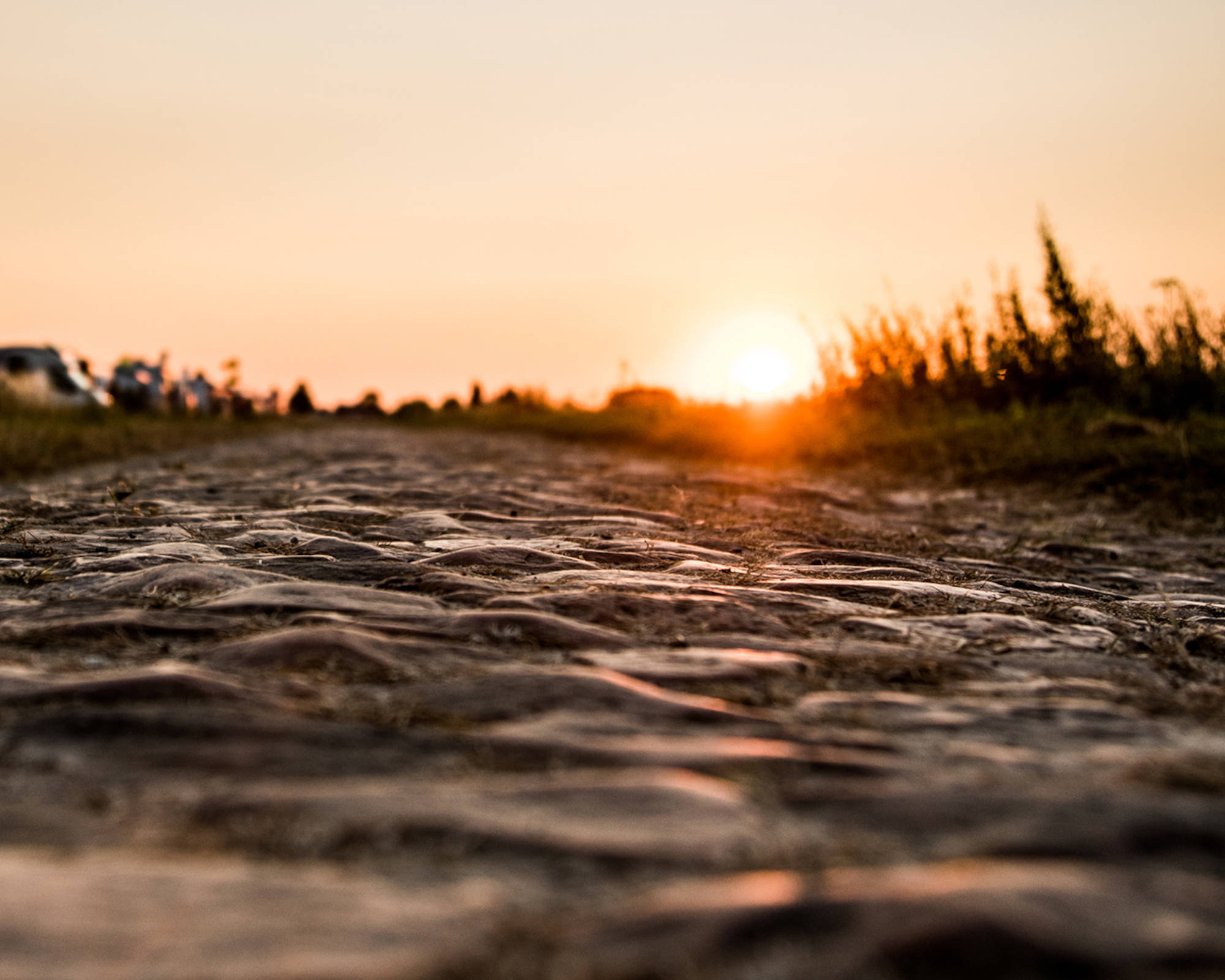Any cycling road race is inseparable from its location: a race is a product of the roads on which it takes place and its local weather systems. It’s also a product of the local culture. Hilly one-day races are different in Spain, Brittany, Italy and Belgium, even if the actual physical challenges can look, on paper, quite similar.
In Belgium, this tendency is magnified. In many regions, bike races take place on a certain day, then pack up and leave. Visit San Remo on any of the 364 days of the year a monument doesn’t finish there, and it looks like any Italian seaside town. However, the bergs and cobbled roads of the Vlaamse Ardennen, in which the Tour of Flanders and many more races take place, are different. First, a lot more races happen on them. Second, cycling is an integral part of the local culture. The Oude Kwaremont, for example, is never just a small thoroughfare connecting points A and B; it is a bike racing mecca, all year round.
The Vlaamse Ardennen are a tiny range of lazily rolling hills on the western edge of Belgium. It’s a part of the country which is mainly noteworthy for the fact that it is almost entirely un-noteworthy. Outside the cosmopolitan and international triangle of Brussels-Antwerp-Gent, far inland from the coast and tourist trap of Bruges, the opposite side of the country and over the language border from the former industrial heartlands of Wallonia, the Vlaamse Ardennen are fascinating to cycling fans, and few other people.
Draw an irregular and elongated pentagon linking the towns of Oudenaarde, Zottegem, Geraardsbergen, Ronse and Kluisbergen, and the Vlaamse Ardennen roughly sit within the edges, a bucolic but functional farmscape of fields, narrow roads, small copses and many, many tiny villages. Unlike the other great landscapes of cycling, such as the wild grandeur of the Alps and Pyrenees, or picture-postcard tourist scenery of the Med and Tuscany, this is a working landscape. Stand atop any of the Flemish bergs, and the wind carries the muffled noise of rural industry and the ever-present background smell of fertiliser.
The range tops out at 150 metres above sea level on the Hotondberg, near the top of the Kruisberg climb, north of Ronse: they are not epic in dimension. If you were to try Everesting on the Oude Kruisberg, for example, just below the Hotondberg, you’d have to climb it 103 times. But they are quintessentially and undeniably Belgian.
Furthermore, the way in which this landscape intersects with its habitation pattern, weather and local culture has created a network of roads which present the racing cyclist with a complex challenge. Science has simplified the challenge of, say, an Alpine pass by reducing it to a simple equation involving watts, weight, time and lung capacity. These things also come in handy when racing in the Vlaamse Ardennen, but a big engine is only the cost of entry. To win the Tour of Flanders, or the E3 Classic, or Omloop Het Nieuwsblad, the rider needs to parse multiple layers of challenge. They must understand how the roads duck left and right around fields, where they narrow, where they are exposed to the wind, whether the organisers are sending them left or right at the top of this or that climb and, crucially, what two dozen other teams of riders are doing and might do.
Civil engineers and planners have tried to tame the crazy network of zigzagging lanes in the Vlaamse Ardennen with larger national roads that connect the bigger towns. But in the context of bike racing, the bigger roads are where the action often is, and while the business traveller can now drive far faster between point A and point B than 50 years ago, the enterprising race organiser can use the N roads to better connect any number of climbs, narrow roads and complicated racing challenges.
The N8 runs between Oudenaarde and Brakel and then onward towards Brussels but links the Eikenberg and cobbled section at Mater; the N36 runs parallel to the Oude Kwaremont and is the location of one of cycling’s biggest annual shit-fights as the peloton descends the wide main road – you can’t move up on the Kwaremont because it’s too narrow, and you can’t move up on either of the two narrow roads that lead to the bottom, so counting back, this is the last chance to be in a good position at the bottom of the Kwaremont, which is the only way to be in a good position at the top of the Kwaremont, which is the only way to be in a good position going into the Paterberg, the next climb on the route, which is the only way to be in a good position on the Koppenberg, and so on and so on.
You might think, as a tourist riding the cobbled bergs of the Vlaamse Ardennen, that the hills are the challenge but in a bike race, they are only one small part of it. A team can turn up to the Tour of Flanders with a plan, but the roads, other riders and circumstances can all punch them in the mouth. The Vlaamse Ardennen, a quiet working landscape of tame-looking hills and copses, is also the purest expression of road cycling’s complexity and depth.
We’ll begin at the Muur van Geraardsbergen, because while it is unusual compared to most of the other famous cycling climbs of the Vlaamse Ardennen in that it is predominantly an urban climb, it is one of the sport’s most photogenic and atmospheric places. The octagonal dome of the chapel at the top and the steep twist of the final 50 metres of the cobbles towards it are part of the iconography of cycling. The knoll to the side of the road is a seething amphitheatre of noise and colour when races come through.
It’s a place which has a lot of meaning for Bert Roesems and Allan Peiper, who are very local riders, each in their own way. The pair know each other from when Roesems was a racer for Lotto in the 2000s and Peiper a DS. If you stand back and look at the career of the younger man, you might observe that you could not find a more stereotypically Belgian rider: he rode for Vlaanderen 2002, Landbouwkrediet, Palmans and Lotto in the course of a 12-year career, winning races like Nokere Koerse and Brussels-Ingooigem. He was also Belgian time-trial champion.
Australian Peiper is an adopted Flandrian – he may come from the other side of the world in Victoria, Australia, but settled in Flanders as a young racer in the 1980s and lives in Geraardsbergen, on the west side of the Dender river with a view across the valley of the town as it rises up the Oudenberg towards the Kapelmuur at the top.
From the Kapelmuur, the Tour of Flanders used to drop down the other side, climb the Bosberg and head to Ninove for the finish of the race. Omloop Het Nieuwsblad’s current iteration follows this route. “If you continue down the road past the old finish line, 18 kilometres later, you end up almost at my home,” says Roesems, who comes from Halle, east of the Flemish Ardennes and south of Brussels. “My bit of Flanders is at the crossing point between Flemish speaking and French speaking Belgium. If I continue south, I get to Hainault in the French speaking part, and still enjoy pretty quiet roads, good for training, a little bit up and down. If I go to the west I can go into the Vlaamse Ardennen. Without having to do too many kilometres, I can quickly access the whole region between Brakel, Geraardsbergen and Oudenaarde from home.”
The 49-year-old is philosophical about the effect of the passing years on his ability to ride fast up the bergs. “I ride around the climbs now, not over them,” he laughs. “You’re not the same person any more. You add years and weight. If you want to go over them fast, then you’re at a heart rate that is anything but comfortable.”
As a rider, Roesems had a strong set of assets. He was a good time triallist and at six foot five, he could handle himself in a bunch. He had no sprint, but didn’t want to take the path of least resistance into the life of a domestique – he maintained a healthy ambition to try to win races with a canny ability to read his rivals, especially at the end of a hard day. He enjoyed riding for smaller Belgian squads Landbouwkrediet and Palmans because his situation was perfect there: the teams routinely got selected for the biggest races, and Roesems had enough seniority and ability to be able to race for himself. This, at the time, was preferable to being a small fish in a big pond. Sure enough, later, at Lotto, he was in a much bigger outfit, but the wins dried up a little. “When you are unable to sprint, you have to smash the other guys,” he says. “Either wear them out over a long period, or just be the strongest.”
He was good at psychology, and recognised that other good riders who had gone down the route of being a domestique would lose the ability to make lucid decisions if they actually found themselves in a winning position. “The liberty to try something allowed me to keep that tactical sense, contrary to guys who were always working for a leader in a bigger team. If you ended up with them in the final, you saw that they were never able to take the right decision. They were too eager and didn’t know any more how that tactical game was played. When you are in a race with your heart rate and lactic acid level up, it seems having a fully functioning brain is not that easy.”
Roesems’s tactics were always clear: get away and come in solo, outlast his rivals, and in any case where they looked as strong as him, work them over by putting in the smallest of kicks when they finished their turn. “Now he’s hurting to get back on to my wheel so I am slowly killing him, but he doesn’t know it yet,” he reflects with satisfaction.
Roesems now works as a sports marketing co-ordinator for Shimano. He is the liaison between the professional cycling teams who need equipment, and the company which makes it. As an ex-rider he understands the sport; as an employee of Shimano he understands how to supply teams with equipment. “Everything we do with teams, or them with us, I am more or less in the middle,” he says. “I’m the go-to guy for everything related to Shimano. Marketing, communications, publicity, but also the technical stuff. Everything that needs to be supplied from Shimano, I handle that.”
It is a more complicated job than it might sound, and a job which has become even more complicated over the years. “We’re a long way further down the road than a rider having three bikes,” he says. “They have six or seven, easy. Race bike, second race bike, third race bike. Already three. Then a home bike, a TT bike, a home TT bike, so that’s already six. Classics guys have bikes for Paris-Roubaix; GC riders might have a special climbing bike and so on. From the point of view of components and equipment, that’s a lot of wheelsets, derailleurs and brakesets for only one rider.”
Covid hasn’t made things easier: pre-season training camps used to be an ideal opportunity to go and meet riders, but health restrictions have got in the way. Shimano also moved their flagship Dura-Ace groupset from 11 to 12 speed last August, and changing every bike for every rider in every team over a period of time, which also includes the end of one season and the start of the next, is a logistical challenge. “As a rider, you were never aware of what was needed to be able to ride your bike, or even to have a bike. There is a lot of behind-the-scenes work. We don’t have a whole pile of equipment lying there and they can just turn around and say, give me a quantity. It needs to be ordered. It comes out of a budget. There is planning and follow-up,” he says.
The change of gear between Roesems the rider and Roesems the Shimano go-to guy was a smooth and satisfying clunk. “There’s no sense of dwelling on the past,” he says. “I was part of a particular generation and there’s nothing you can change about that. I don’t want to be the guy who says, if I raced now, my career would have been different, or I’d have made a lot more money. You’re in the generation you were part of and that has to do with the year you were born in.”
The view from the top of the Muur has therefore changed for Bert Roesems. “This was a place of suffering,” he says. “Something I had to conquer as fast as possible, and be up there with the best and follow them. The magic is not only that you fight against the natural surroundings – the cobbles, climbs, riders and elements. But also culturally, in the sense of being from Belgium, this is part of our heritage and upbringing.
“We rode the Muur this time to have a taste of the cobbles, and to show a little bit about what riding your bike in Belgium in February or March means. It was as hard as ever.”
Story by Edward Pickering
